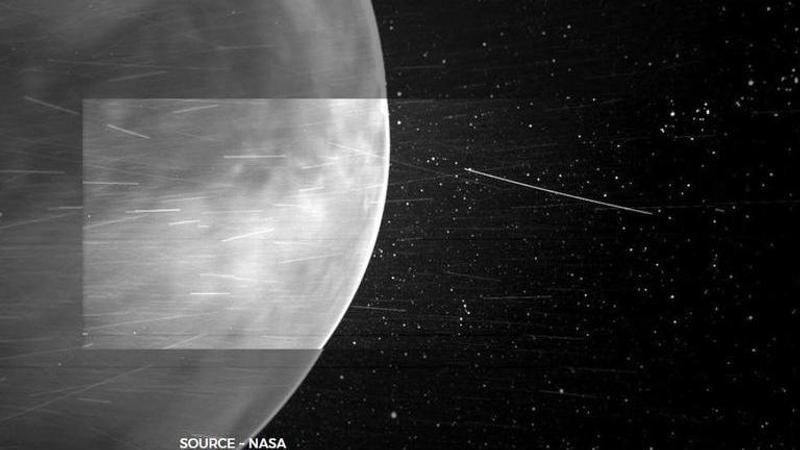Published 15:39 IST, February 27th 2021
NASA Solar Probe's Venus Flyby treats fans with glorious images of the planet
NASA Solar Probe completed its fourth Venus Flyby and now the space agency has released clear beautiful images of the planet using the WISPR technology. Read

NASA's Solar Probe has successfully completed its fourth swing pass near Venus on February 20, 2021. While celebrating this fortunate happening, scientists released a few stunning pictures of Venus' mysterious nightside. The images give us a surprisingly clear and mesmerizing glimpse of the Venusian surface.
NASA Solar Probe clicks beautiful pictures of Venus
Image ~ NASA
The Parker Solar Probe by NASA recently flew by Venus and took some stunning pictures of the Venusian surface. The NASA Solar Probe was launched in 2018 and it is currently in the 4th year of its 7 seven-year-journey. It was sent from Earth to study the Sun, however, it has to maintain a 4 million miles distance which is the closest any human-made object has ever been. That is the reason why the spacecraft requires Venus' gravity so that it can tighten its orbit around the Sun through a series of seven flybys.
With each Venus Flyby, the NASA Solar Probe reaches closer to the native star. It is currently the fourth flyby of the Parker Solar Probe and three flybys are still left to accomplish in the upcoming 3 years of its journey. Taking advantage of the Venus passing, NASA not only took some intriguing shots of the planet but also shared them with its audience online.
Image ~ NASA.gov
The NASA Solar Probe uses Wide-field Imager (WISPR) to take images of the Sun and Venus. WISPR is designed to take images of the solar corona and inner heliosphere in visible light, as well as images of the solar wind and its structures as they approach and flyby spacecraft. At Venus, the camera detected a bright rim around the edge of the planet that may be nightglow - light emitted by oxygen atoms high in the atmosphere that recombine into molecules in the nightside. The prominent dark feature in the centre of the image is Aphrodite Terra, the largest highland region on the Venusian surface. The feature appears dark because of its lower temperature, about 85 degrees Fahrenheit (30 degrees Celsius) cooler than its surroundings.
Parker Solar Probe is part of NASA’s Living with a Star program to explore aspects of the Sun-Earth system that directly affect life and society. The Living with a Star program is managed by the agency’s Goddard Space Flight Center in Greenbelt, Maryland, for NASA’s Science Mission Directorate in Washington. Johns Hopkins APL designed, built and operates the spacecraft.
Updated 15:39 IST, February 27th 2021





